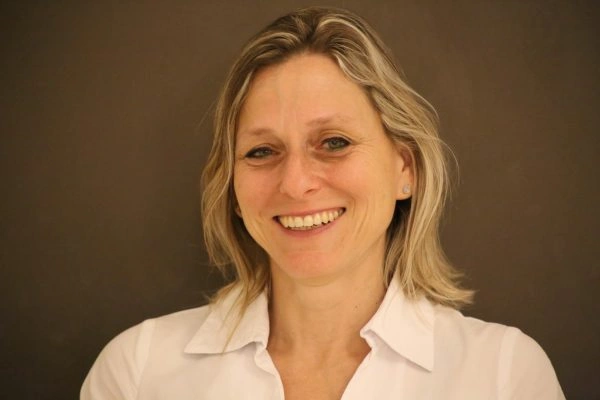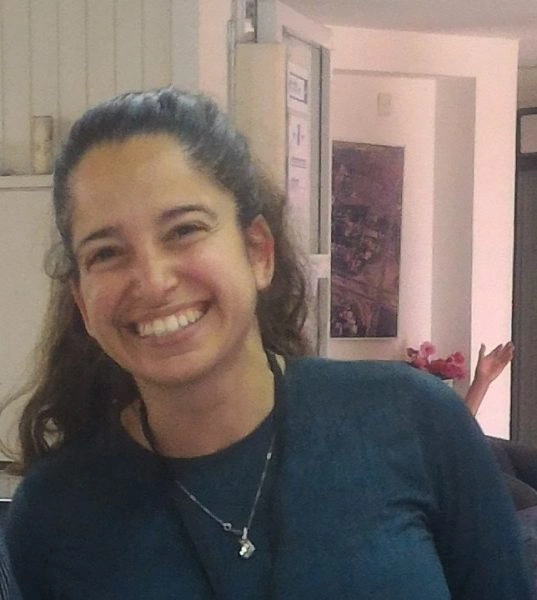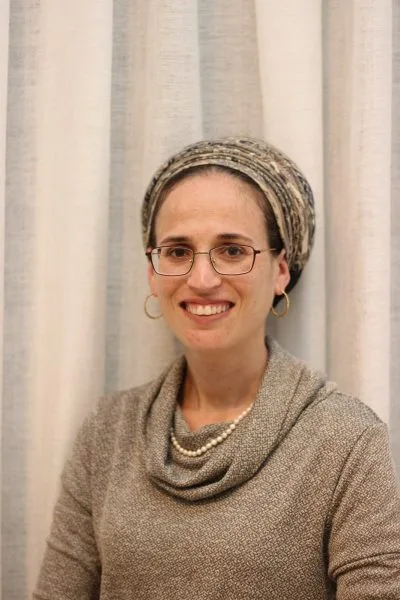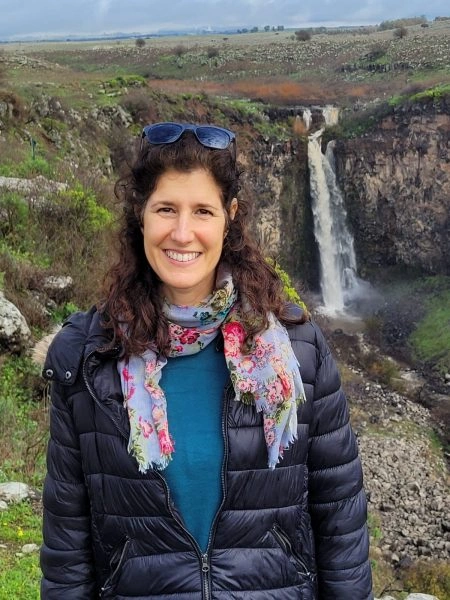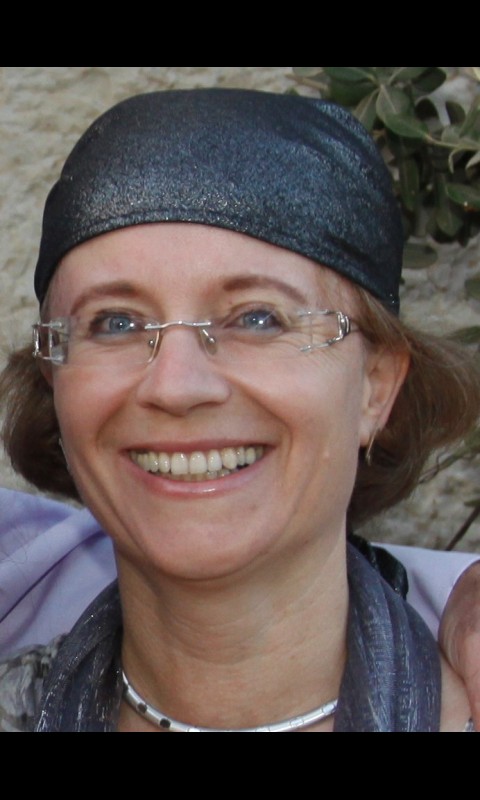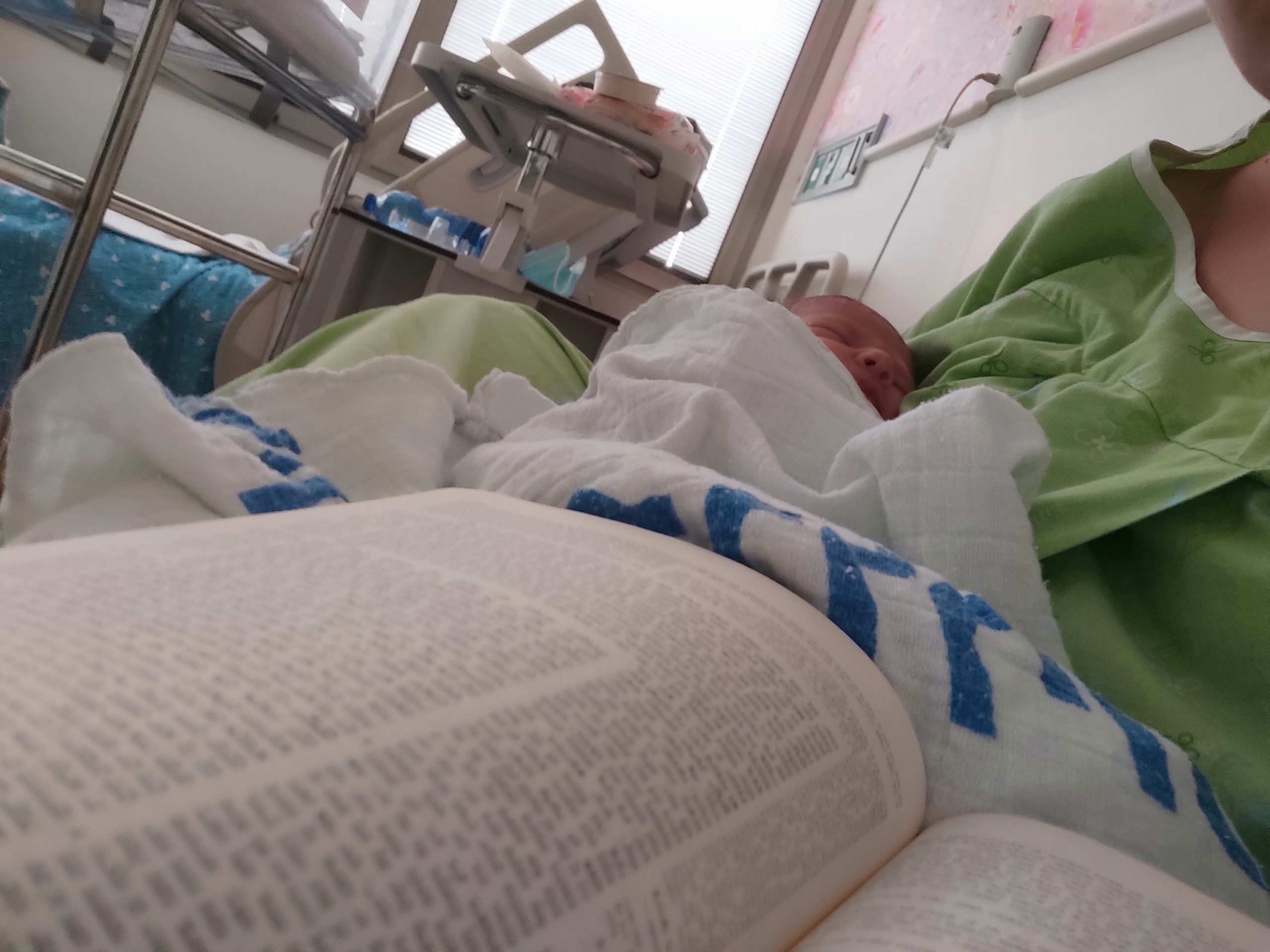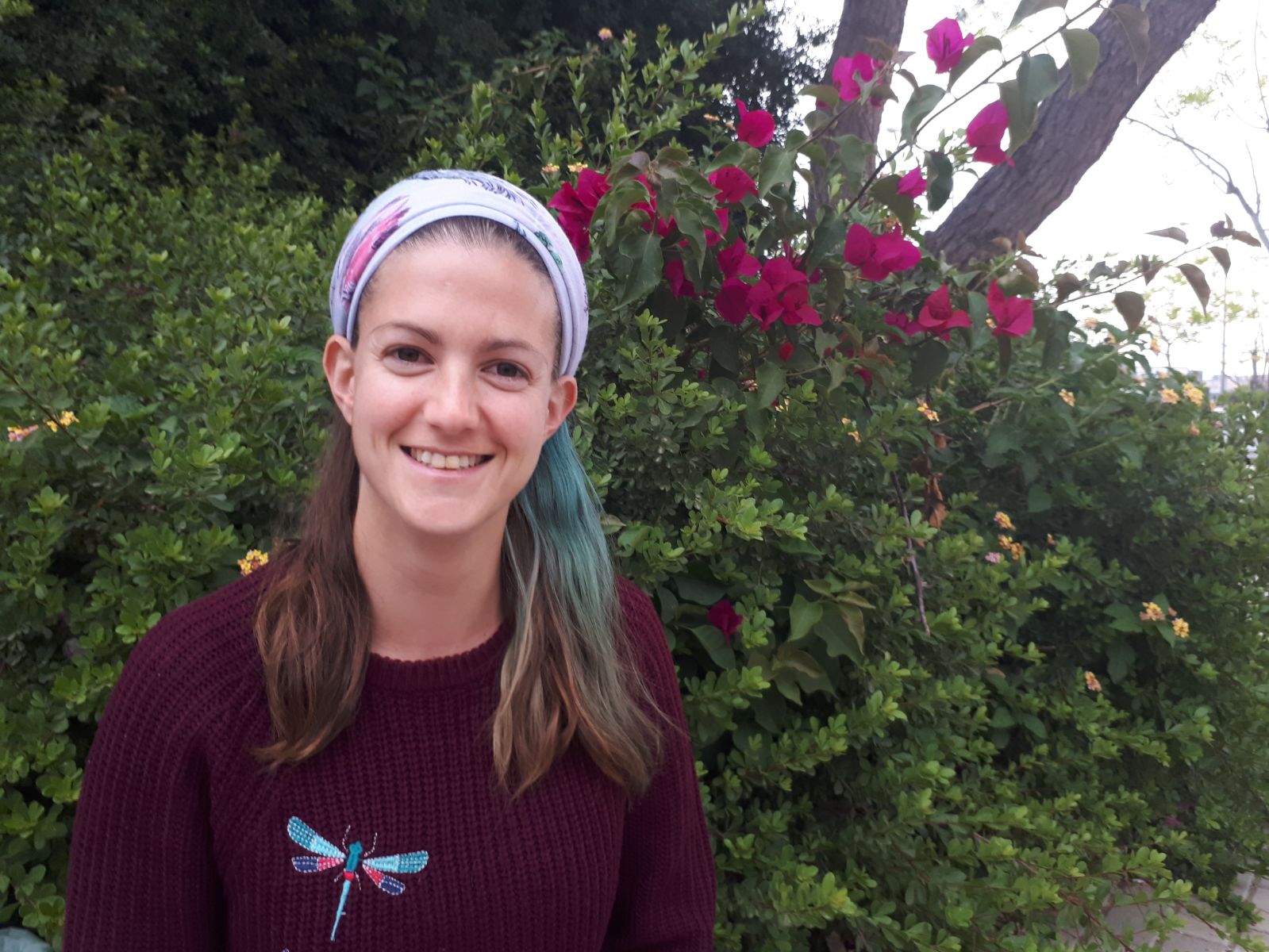הגמרא משווה בין שתי הברייתות לגבי חגבים טהורים. אז עוברים לנושא דגים כשרים.
לימוד השבוע מוקדש ע”י טינה לם לע”נ יצחק מאיר בן הרב צבי אריה ואסתר בתיה.
רוצים להקדיש למידה? התחל כאן:
לימוד השבוע מוקדש ע”י טינה לם לע”נ יצחק מאיר בן הרב צבי אריה ואסתר בתיה.
העמקה
רוצה להבין מה באמת קורה מתחת לפני השטח של הסוגיה?
שיעורים, פודקאסטים והרחבות של מיטב המורות שלנו יפתחו לך עוד זוויות וכיווני חשיבה.
חדשה בלימוד הגמרא?
זה הדף הראשון שלך? איזו התרגשות עצומה! יש לנו בדיוק את התכנים והכלים שיעזרו לך לעשות את הצעדים הראשונים ללמידה בקצב וברמה שלך, כך תוכלי להרגיש בנוח גם בתוך הסוגיות המורכבות ומאתגרות.
פסיפס הלומדות שלנו
גלי את קהילת הלומדות שלנו, מגוון נשים, רקעים וסיפורים. כולן חלק מתנועה ומסע מרגש ועוצמתי.
חולין סו
במאי קמיפלגי תנא דבי רב ותנא דבי רבי ישמעאל בראשו ארוך קמיפלגי
The Gemara asks: With regard to what do the tanna of the study hall, who taught the first baraita above, and the tanna of the school of Rabbi Yishmael disagree? They disagree with regard to a grasshopper whose head is long. According to the tanna of the study hall it is prohibited, and according to the tanna of the school of Rabbi Yishmael it is permitted.
תנא דבי רב סבר אשר לו כרעים כלל ארבה סלעם חרגול חגב למינהו פרט כלל ופרט אין בכלל אלא מה שבפרט דמיניה אין דלאו דמיניה לא ומרבי דדמי ליה משני צדדין
The Gemara elaborates: The tanna of the study hall holds that the previous verse, permitting all species “which have jointed legs” (Leviticus 11:21), is a generalization. The species arbeh, solam, ḥargol, and ḥagav, and the phrase “after its kinds,” that appears after each, are a detail. As a rule, in any instance of a generalization and a detail, the generalization includes only that which is spelled out in the detail. Therefore, only grasshoppers of the same species as those detailed in the verse are kosher. Grasshoppers that are not of the same species as them are not kosher. And the phrase “after its kinds” amplifies the halakha to include grasshoppers that are similar to the named species in two aspects, i.e., that are very similar to them. Since all the named species have short heads, grasshoppers with long heads are forbidden.
תנא דבי ר’ ישמעאל סבר אשר לו כרעים כלל ארבה סלעם חרגול חגב פרט למינהו חזר וכלל כלל ופרט וכלל אי אתה דן אלא כעין הפרט ומרבי כל דדמי ליה בחד צד
By contrast, the tanna of the school of Rabbi Yishmael holds that the phrase “which have jointed legs” is a generalization. The species arbeh, solam, ḥargol, and ḥagav are a detail. And by the phrase “after its kinds” after each species, it then generalized again. In any instance of a generalization, and a detail, and a generalization, you may deduce that the verse is referring only to items similar to the detail. And the verse therefore amplifies the halakha to include any grasshopper that is similar to the named species in even one aspect, i.e., that has the four signs listed in the mishna, even if its head is long.
והא לא דמי כללא קמא לכללא בתרא כללא קמא אשר לו כרעים אמר רחמנא דאית ליה אכול דלית ליה לא תיכול כללא בתרא עד דשוו בארבעה סימנין
The Gemara asks: But how can this be considered a generalization, a detail, and a generalization? The first generalization is not similar to the latter generalization. In the first generalization, the Merciful One states: “Which have jointed legs,” indicating that you may eat a grasshopper that has jointed legs, but you may not eat one that does not have jointed legs, irrespective of any other sign. However, the latter generalization: “After its kinds,” indicates that no grasshopper is kosher unless it shares all four signs with the named species.
תנא דבי ר’ ישמעאל בכללי ופרטי כי האי גוונא דאין ודאמרי’ נמי בעלמא דדאין תנא דבי ר’ ישמעאל בכללי ופרטי כי האי גוונא מהכא:
The Gemara responds: The tanna of the school of Rabbi Yishmael deduces from generalizations and details like this case, even if the generalizations are not similar to one another. The Gemara notes: And that which we also say generally, that the tanna of the school of Rabbi Yishmael deduces from generalizations and details like this case, is derived from here.
אמר מר אי שמו חגב יכול אין בו כל הסימנין הללו ת”ל למינהו עד שיהו בו כל הסימנין הללו אין בו כל הסימנין הללו מהיכא תיתי ארבה וחרגול כתיב
The Gemara analyzes the baraita of the school of Rabbi Yishmael: The Master said: If its name must be ḥagav, one might have thought that any ḥagav is kosher, even if it does not have all these four signs. Therefore, the verse states: “After its kinds,” indicating that it is not kosher unless it has all these signs. The Gemara asks: From where would this be derived, that a grasshopper is kosher even if it does not have all these signs? How could one entertain this possibility? Arbeh and ḥargol are written beforehand, indicating that all kosher grasshoppers must share the signs they both possess.
אי לא כתיב סלעם כדקאמרת השתא דכתיב סלעם לרבויי ראשו ארוך אימא לירבי נמי כל דהו קמ”ל
The Gemara responds: If solam had not been written as well, it would be as you said. But now that it is written: “Solam,” to include long-headed grasshoppers even though none of the named species have long heads, I will say: Let us also include any grasshopper that is called ḥagav. Therefore, the phrase “after its kinds” teaches us that this is not so.
מאי שנא התם דאמרת סלעם זה רשון חרגול זה ניפול ומאי שנא הכא דאמרת סלעם זה ניפול חרגול זה רשון מר כי אתריה ומר כי אתריה:
The Gemara asks: What is different there, in the baraita of the study hall, that you say that the solam is the rashon, and the ḥargol is the nippul, and what is different here, in the baraita of the school of Rabbi Yishmael, that you say: The solam is the nippul, and the ḥargol is the rashon? The Gemara responds: This Sage refers to them in accordance with the custom of his locale and that Sage refers to them in accordance with the custom of his locale.
ובדגים כל שיש לו סנפיר וקשקשת: תנו רבנן אין לו עכשיו ועתיד לגדל לאחר זמן כגון הסולתנית והעפיאן ה”ז מותר יש לו עכשיו ועתיד להשירן בשעה שעולה מן המים כגון
§ The mishna states: And with regard to fish, any fish that has a fin and a scale is kosher. The Sages taught in a baraita: If a fish does not have scales now but will grow them after a period of time, such as the sultanit and afyan fish, it is permitted. Likewise, if it has scales now but will shed them when it is caught and rises from the water, such as
אקונס ואפונס כספתיאס ואכספטיאס ואטונס ה”ז מותר
the akunas, and the afunas, and the kesaftiyas, and the akhsaftiyas, and the atunas, it is permitted.
תנן התם כל שיש לו קשקשת יש לו סנפיר ויש שיש לו סנפיר ואין לו קשקשת יש לו קשקשת ויש לו סנפיר דג טהור יש לו סנפיר ואין לו קשקשת דג טמא
We learned in a mishna elsewhere (Nidda 51b): Any fish that has scales certainly has fins, but there are fish that have fins and do not have scales. Any fish that has scales and fins is a kosher fish. If it has fins but no scales, it is a non-kosher fish.
מכדי אקשקשת קא סמכינן ליכתוב רחמנא קשקשת ולא ליכתוב סנפיר אי כתב רחמנא קשקשת ולא כתב סנפיר הוה אמינא מאי קשקשת סנפיר ואפי’ דג טמא כתב רחמנא סנפיר וקשקשת
The Gemara asks: Now, since we rely only on scales to deem a fish kosher, presuming that if it has scales it must have fins as well, let the Merciful One write only “scales” as the sign of a kosher fish and let Him not write “fins” at all. The Gemara responds: If the Merciful One had written: Scales [kaskeset], and had not written: Fins [senappir], I would say: What is kaskeset? It is fins. And I would thereby come to permit even non-kosher fish. Therefore, the Merciful One stated: “Senappir and kaskeset,” to leave no room for error.
והשתא דכתב רחמנא סנפיר וקשקשת ממאי דקשקשת לבושא הוא דכתיב (שמואל א יז, ה) ושריון קשקשים הוא לבוש וליכתוב רחמנא קשקשת ולא ליכתוב סנפיר
The Gemara asks: But now that the Merciful One has written: “Senappir and kaskeset,” from where is it derived that kaskeset denotes clothing, i.e., scales, rather than fins? As it is written: “And he was clad with a coat of scale armor [kaskasim]” (I Samuel 17:5). And if it is certain that kaskeset refers to scales, the question resurfaces: Let the Merciful One write only “kaskeset,” and let Him not write “senappir.”
א”ר אבהו וכן תנא דבי ר’ ישמעאל (ישעיהו מב, כא) יגדיל תורה ויאדיר
Rabbi Abbahu said, and so the tanna of the school of Rabbi Yishmael taught: The Holy One, Blessed be He, wished to bestow good upon the Jewish people. Therefore, He made their Torah abundant, as it is written: “The Lord was pleased, for His righteousness’ sake, to make Torah great and glorious” (Isaiah 42:21). He consequently expanded some aspects of the Torah more than strictly necessary.
ת”ר ממשמע שנאמר אכול את שיש לו שומע אני אל תאכל את שאין לו וממשמע שנאמר אל תאכל את שאין לו שומע אני אכול את שיש לו ולמה שנאן לעבור עליו בעשה ולא תעשה
§ The Sages taught in a baraita: The Torah states the prohibition of non-kosher fish both positively and negatively: “These may you eat of all that are in the waters: Whatever has fins and scales…them you may eat. And all that have not fins and scales…they are a detestable thing unto you” (Leviticus 11:9–10). From the implication of that which is stated: Eat fish that have these signs, I would derive the inverse: Do not eat fish that do not have them. And from the implication of that which is stated: Do not eat fish that do not have them, I would derive the inverse: Eat fish that have them. If so, why did the Torah teach both of them? It is in order to indicate that one who eats non-kosher fish transgresses, on its account, both a positive mitzva and a prohibition.
(ויקרא יא, ט) תאכלו מכל אשר במים מה ת”ל שיכול הואיל והתיר במפורש והתיר בסתם מה כשהתיר במפורש לא התיר אלא בכלים אף כשהתיר בסתם לא התיר אלא בכלים מנין לרבות בורות שיחין ומערות ששוחה ושותה מהן ואינו נמנע ת”ל תאכלו מכל אשר במים
Given that the verse states: “Whatever has fins and scales…them may you eat,” what is the meaning when the verse states: “These may you eat of all that are in the waters?” Why is this necessary? It is necessary, as without this verse one might have thought: Since the Torah permitted creeping creatures of the water without fins and scales explicitly and also permitted them implicitly, one can infer: Just as when the Torah permitted such creatures explicitly, it permitted them only when in vessels, so too, when it permitted them implicitly, it permitted them only in vessels. From where is it derived to include as kosher even those in pits, ditches, and caves, that one may bend down and drink from them and need not refrain from drinking the creeping creatures in them? The verse states: “These may you eat of all that are in the waters,” to indicate that this is permitted.
היכן התיר בכלים דכתיב את זה תאכלו מכל אשר במים וגו’ בימים ובנחלים הוא דכי אית ליה אכול דלית ליה לא תיכול הא בכלים אע”ג דלית ליה אכול
The Gemara elaborates: Where did the Torah permit them in vessels? It did so in the following verse, as it is written: “These may you eat of all that are in the waters: Whatever has fins and scales in the waters, in the seas, and in the rivers, them may you eat.” It would have been sufficient to write simply: “In the waters.” The addition of “in the seas and in the rivers” indicates that it is only in the seas and in the rivers that when it has fins and scales you may eat it, and that you may not eat one that does not have them. But with regard to a creeping creature found in vessels, even if it does not have fins and scales you may eat it.
אימא בכלים אע”ג דאית ליה לא תיכול לא סלקא דעתך דכתיב (ויקרא יא, י) וכל אשר אין לו סנפיר וקשקשת בימים ובנחלים מכל שרץ המים בימים ובנחלים דלית ליה לא תיכול הא בכלים אע”ג דלית ליה אכול
The Gemara objects: One could just as easily say the opposite: You may eat a fish that has these signs only when it is found in seas and rivers, but in vessels, even if it has fins and scales, you may not eat it. The Gemara responds: This should not enter your mind, as it is written: “And all that have not fins and scales in the seas, and in the rivers, of all that swarm in the waters, and of all the living creatures that are in the waters, they are a detestable thing to you.” The verse indicates that it is only in the seas and in the rivers that you may not eat a fish that does not have fins and scales. But you may eat a creeping creature found in vessels, even if it does not have fins and scales.
ואימא במים כלל בימים ובנחלים פרט כלל ופרט אין בכלל אלא מה שבפרט ימים ונחלים אין נעיצין וחריצין לא
The Gemara objects: But one can prove whether it is permitted to drink from pits, ditches, and caves differently. Say instead that the phrase “whatever has fins and scales in the waters” is a generalization, and the phrase “in the seas and in the rivers” is a detail. In any instance of a generalization and a detail, the generalization only includes that which is spelled out in the detail. Therefore, in the seas and rivers, yes, one may eat only fish with fins and scales, but in water channels and trenches, as well as pits, ditches, and caves, this restriction does not apply. Consequently, the clause “These may you eat of all that are in the waters” is unnecessary.
במים חזר וכלל
The Gemara responds: This deduction is not sound. The term “in the waters” appears twice in the verse. When the verse repeated it, it then generalized again. Consequently, there are two generalizations and one detail in the verse, making it an instance of a generalization, a detail, and a generalization, which includes all cases similar to the detail, including pits, ditches, and caves, indicating that the restriction applies to them as well. Therefore, the clause “These may you eat of all that are in the waters” is necessary to teach that all fish in pits, ditches, and caves are permitted.
הני תרי כללי דסמיכי להדדי נינהו אמר רבינא כדאמרי במערבא כל מקום שאתה מוצא שני כללות הסמוכין זה לזה
The Gemara asks: How can this verse be an instance of a generalization, a detail, and a generalization? These are two generalizations that are adjacent to each other. Both instances of the term “in the waters” precede the detail, such that the verse is actually a generalization, a generalization, and a detail. Ravina said: As they say in the West, Eretz Yisrael: Wherever you find two generalizations juxtaposed one with the other, followed by a specific detail,



















